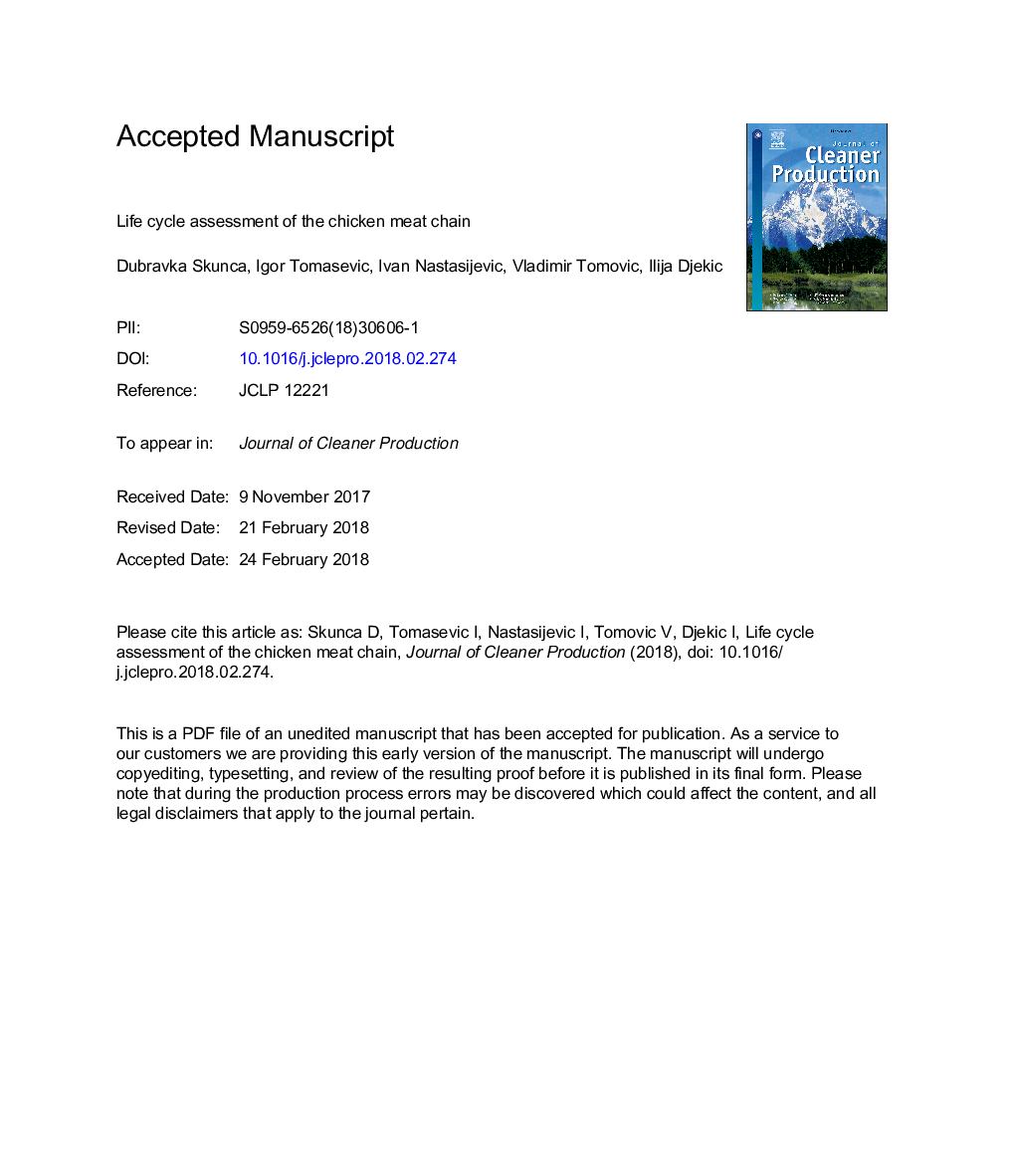| Article ID | Journal | Published Year | Pages | File Type |
|---|---|---|---|---|
| 8096723 | Journal of Cleaner Production | 2018 | 28 Pages |
Abstract
The objective of this paper was to assess the environmental performance of the chicken meat chain, including 119 different farms, slaughterhouses, meat processors and retailers, as well as 500 households. A total of 619 life cycle assessment calculations have been completed to identify and quantify the environmental impacts from a cradle-to-grave perspective covering five subsystems: 'chicken farm', 'slaughterhouse', 'meat processing plant', 'retail' and 'household use'. Structured surveys in selected entities have been conducted in order to collect life cycle inventory input data. Five environmental impact potentials were calculated in this study: global warming potential, acidification potential, eutrophication potential, ozone layer depletion and cumulative energy demand. The focus of the research was put on global warming potential, ozone layer depletion and cumulative energy demand, as these three indicators had significant values for each of the examined subsystems. As a general finding, this study found that the largest contributor to the environmental profile of the entire chicken meat chain is feed production and energy usage. Mitigation options for optimization of environmental impacts rely on the utilization of grain legumes as protein source in feed, treating of chicken litter in a biogas digester, application of the energy efficient equipment through the entire chain and recycling of household waste.
Related Topics
Physical Sciences and Engineering
Energy
Renewable Energy, Sustainability and the Environment
Authors
Dubravka Skunca, Igor Tomasevic, Ivan Nastasijevic, Vladimir Tomovic, Ilija Djekic,
